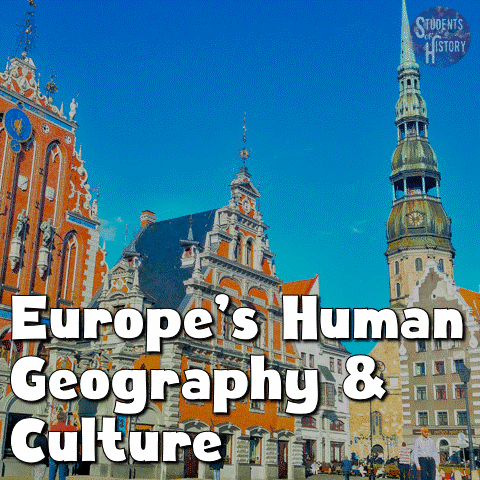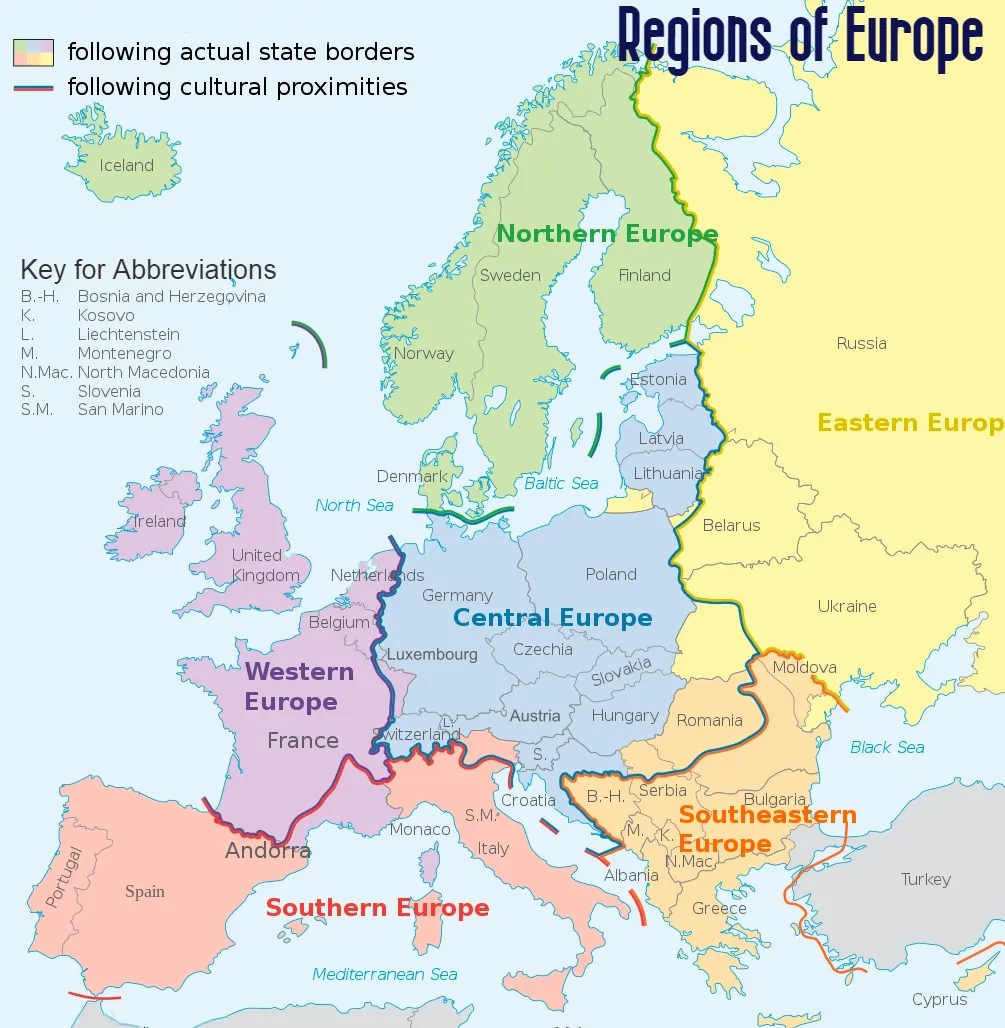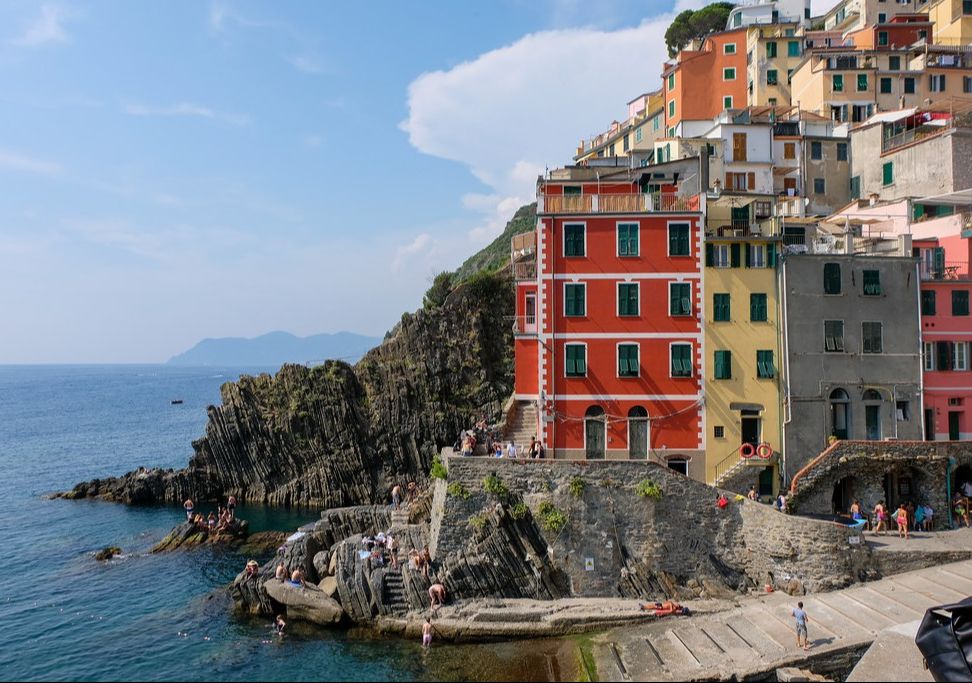Europe's Human Geography and Culture

Europe has a population of around 745 million (about 10% of the world population); the third-largest after Asia and Africa. There are 44 countries in Europe, of which 27 are members of the European Union.
The continent's human geography and culture form the basis of Western civilization. Many people trace their cultural roots to ancient Greece and Rome along with the subsequent spread of Christianity.
Northern Europe
Northern Europe is comprised of the Nordic countries of Sweden, Norway, Denmark, and Finland. The region is known for its stunning natural beauty with fjords, dense forests, and glaciers across its physical landscape.
The fairy tales of Hans Christian Andersen of Denmark are known throughout the world, especially "The Emperor's New Clothes", "The Little Mermaid", and "The Ugly Duckling". Swedish cinema and music have also been widely successful. Scandinavian cuisine is centered on seafood along with fresh, local ingredients.

With increased opportunity and education for the masses in the late 20th century, Scandinavia became one of the world's wealthiest regions. Its societies emphasize social welfare, ensuring that everyone has access to healthcare and education.
Western Europe
Western Europe is dominated by the United Kingdom, which spread its values across the world during the Age of Imperialism, when the “sun never set on the British Empire.”
Similarly, France and the Netherlands also sought to build empires in the 1800s but have since granted independence to most of the parts of the world they once colonized.
Today, France’s capital Paris, with its iconic Eiffel Tower, is a symbol of art and romance. The country is renowned for its cuisine and fashion.
The United Kingdom comprises England, Scotland, Wales, and Northern Ireland, each with their own distinct culture. The capital of London is a world cultural capital and a dynamic blend of tradition and progress.
Due to large-scale emigration from Ireland, Irish culture has a wide reach in the world, especially its music, literature, and pub culture.
Eastern Europe
Eastern Europe includes countries shaped by resilience after being locked behind the “iron curtain” during the Cold War. They have endured war, fascism, communism, corruption, and famine.
Russia is the largest nation in this group, followed by Ukraine, Belarus, Romania, and Moldova. Each was a communist state for much of the 20th century before most turned to democracy after the fall of the Soviet Union in 1991.
Medieval castles, traditional folk music, and tight-knit families characterize Eastern Europe. The Eastern Orthodox church has shaped much of the region’s culture along with Slavic and Greek traditions.
People share a tradition of strength and perseverance. Despite its turbulent history, Russia has made contributions to literature, music, sports, science, and space exploration. Its ongoing conflict with Ukraine, however, has had a devastating impact on both nations.
Southern Europe
Southern Europe features some of the most beautiful coastlines in the world and cultures that go back to some of the earliest civilizations. Italy, Spain, Portugal, and Greece are all rooted to their Mediterranean or Atlantic coasts with cultures connected to the sea.
The human geography of this region is flavored with a passion for life, delectable cuisine, and a profound love for celebration.

Greece was the birthplace of Western culture. Modern democracies owe a debt to Greek beliefs in government by the people, trial by jury, and equality under the law. Greece also pioneered drama, history, philosophy, and poetry as well as the ancient Olympic games.
Italian culture is responsible for the opera, Renaissance art, beautiful classical music, and one of the world's most popular cuisines. Spanish culture is historically marked by strong ties to the Catholic Church and the country's Mediterranean climate and geography.
Central Europe
Central Europe includes Germany, Poland, Switzerland, Austria, the Czech Republic, and Slovakia which contribute to the harmonious blend of cultures in the region.
Germany has Europe's largest economy and provides its citizens social security, a universal health care system, and tuition-free university education. It is recognized for its positive influence on the world. Germany is known for folk festival traditions like Oktoberfest and its Christmas customs. Football (or soccer) is by far the dominant sport.
Switzerland is one of the world's wealthiest countries, with cities like Zürich and Geneva ranking among the highest in quality of life. The country has four linguistic and cultural regions: German, French, Italian and Romansh. It is also famous for its neutral stance in almost all world conflicts.
Additionally, in Central Europe, Vienna's classical music traditions, Prague's fairy-tale architecture, and Bratislava's bustling markets make Central Europe a captivating crossroads. The people here take pride in preserving their cultural heritage while embracing the opportunities that come with being at the crossroads of diverse influences.